Commentary

I WAS BORN IN Bulawayo, the second largest city in Zimbabwe. Though I now teach and reside in South Africa, my family members still live in various parts of Zimbabwe. In November, I watched as scenes unfolded during a suspenseful week of regime change. A military intervention no one would have predicted set the stage for the resignation of Zimbabwe’s 37-year dictator, Robert Mugabe. Emmerson Mnangagwa became president and will serve out Mugabe’s term.
I was captivated by ordinary citizens’ spontaneous expressions of joy as they took to the streets and expressed their views for the first time without fear of reprisal. Every news station hosted political analysts, church leaders, and members of civil society engaged in rigorous debate on the meaning and impact of the momentous political and economic shifts. They focused on the potential impact on those who have borne the brunt of the economic crisis under Mugabe—which included shortages of money (which made financial transactions a logistical nightmare), widespread corruption, political repression, exceptionally high levels of unemployment, and the looting of profits from the country’s natural resources.

“IS GREEK LIFE Worth Saving?” asked a recent U.S. News & World Report article. It’s a question others are asking since Indiana University became the seventh university to suspend the activities of its fraternities and sororities. Four deaths in a year attributed to the fraternity pledge process are a clear sign that “Greek life” has a problem.
Yet fraternities aren’t going away. In fact, journalist John Hechinger estimates that at least 380,000 male undergraduates belong to Greek-letter organizations, a 50 percent increase over the last decade. And while millennials are flocking to Greek life, even more are abandoning the church.
A 2015 Pew study found that only 27 percent of millennials attend a religious service on a weekly basis. It’s something college Christian organizations are noticing, and why InterVarsity now sponsors “Greek InterVarsity,” purporting that one can be both “Greek” and Christian.
It’s an interesting approach. However, considering these deaths—and the numerous sexual assault allegations made against fraternity men—some wonder if InterVarsity is making the right decision. It’s time to ask how people of faith can effectively combat the toxic behaviors—prejudice, misogyny, and addiction—that are allowed to flourish within the Greek college and university systems.

IN A HISTORIC STATEMENT last November, Pope Francis categorically condemned not only “the threat” of nuclear weapons but also “their very possession.” In December, the Norwegian Nobel Committee awarded the Peace Prize to the International Campaign to Abolish Nuclear Weapons for its work on a new global treaty to prohibit nuclear arms. Already approved by the United Nations, it’s expected to enter into force this year. The Vatican was one of the first to ratify.
Here in the United States, however, it’s like we live in the Twilight Zone. President Donald Trump threatens to “totally destroy North Korea,” tweets about how his “nuclear button” is bigger than Kim Jong Un’s, and is moving ahead with plans to spend $1.7 trillion to rebuild the nuclear arsenal over the next three decades.
Trump’s bombastic rhetoric and impulsive tweets worry Democrats and Republicans alike, with Sen. Bob Corker (R-Tenn.) saying in October, “We could be heading toward World War III with the kinds of comments that he’s making.” In a sign of growing concern, the GOP-controlled Senate held the first congressional hearing on the president’s authority to launch nuclear weapons in 41 years. Sen. Chris Murphy (D-Conn.) said Americans are concerned that President Trump “is so unstable, is so volatile” that he might order a nuclear strike that is “wildly out of step” with our national security interests.
Yet there is a relatively simple step the United States could take that would 1) limit President Trump’s nuclear options, 2) reduce the risk of war, 3) respond to growing international calls to eliminate atomic arms, and 4) save a boatload of money.
It is time to retire our Intercontinental Ballistic Missiles (ICBMs).

IN THE 2016 ELECTION, white Catholics and evangelicals voted overwhelmingly for Donald Trump and the Republican party’s “pro-life” platform. Since Trump’s election, the United States has also seen an unprecedented rise in hate speech and action, such as the Charlottesville rally, and other incidents aimed at minorities, immigrants, and Jews.
The Anti-Defamation League reports a 67 percent rise in anti-Semitic attacks in the U.S. over 2016; anti-Semitic incidents in K-12 private, public, and parochial schools have more than doubled, including harassment, vandalism, and physical assault. These trends are the very opposite of the pro-life platform white Catholics and evangelicals held as a centerpiece for their voting choices.
The challenge of how to respond to a rising tide of hate is not a new one for Christians—nor is the complicity of churches in spreading it. While individuals and a few churches confronted hate speech and actions against Jews in the years of Nazi power in Germany, most supported the state. If we hope to do better today, we must educate our students not only about the end result of complicity and silence—genocide—but also about the stages of bias and hatred that are fertile ground for brutal, systemic violence.

THE EXPLOSION OF “fake news” creates a conundrum for Christians: How do Christians determine what news is fake and what news is true?
Knowing the difference matters. It affects how Christians perceive the world. It helps them decide the impact news will have in their faith walk. It addresses their freedom to act upon what they believe is true.
Some, in the public at large, already believe they know what’s fake and what’s not. One national poll, for example, found that 46 percent of those contacted believe that major news organizations “fabricate stories” about the president and his administration. Another 37 percent didn’t; 17 didn’t know.
Why would such a high percentage of people think that news is made up when it involves the president? One reason: They don’t believe any news that contradicts their view of the president. And why would the president label certain news fake? He doesn’t agree with it, or believes his view is the only true one.

THERE ARE MANY reasons why I find it difficult to turn on the news. Audacious and violent abuses of power are escalating; their grievous impact is mind-numbing. Nowhere has this been more evident than in the recent revelations of how sexual violence and harassment were regularly practiced, indeed normalized, by many men in high places of government and commerce.
It’s hard to take in these stories, especially for women like myself who have suffered for years the ongoing traumatic effects of such violence. There is hardly a woman in this country who hasn’t suffered some form of male sexual violence. When we hear such stories, most women and girls simultaneously relive their own horror stories. It’s not a distanced, objective matter, blithely suited for early morning talk shows. We have painful flashbacks that bring with them a sense of dread, loss of voice, and overwhelming feelings of powerlessness. That’s what happens in the aftermath of traumatic sexual violence. It has the power to haunt you for a lifetime. Sadly, it is most acute when it is kept secret, or not acted upon when revealed. The majority of cases today fall into these categories: Never making headlines, never redressed.
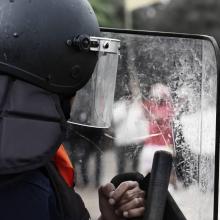
In a moment, everything changed. Scores of police in military garb surrounded the crowd, firing tear gas canisters and rubber bullets. With nowhere to go, protesters poured into our synagogue and the neighboring church. We pulled them in and promised to keep them safe. Concern over property damage may have prompted the aggressive police response, but in our sanctuary, the protesters were our guests and were treated with respect.
Hate groups seized this opportunity to stir up more violence, challenging the police to violate the sanctuary and “gas the synagogue.” This truly horrifying slogan began circulating as a hashtag on Twitter, along with other racist and anti-Jewish statements.

AFTER YEARS OF retreat work and spiritual direction in many contexts, I have come to see that it is very hard to heal individuals or institutions when the larger culture itself is in shock or despair. If there is at least some level of cultural hope or optimism, the healing process moves much easier and creativity flourishes.
When the shades are all pulled down, and so many are content to live in a dark room, it is much harder to enlighten any one part of the room. The shared panic makes high-level responses much more difficult. (Yet, to be honest, it emboldens the rare few too!)
I hope this does not sound too clever or current, but I do believe that much of the world, and surely the United States, is presently in a state of collective post-traumatic stress. We sit stunned by what is happening around us, to us, on our newsfeeds—thrashing around for explanations and answers—inside of incoherence at so many levels. I guess St. John of the Cross would call it a “dark night of the soul,” but it’s not an individual experience. We are now in it together.

SECRETARY OF Education Betsy DeVos this fall weakened laws that make campuses safer places for students to live and learn—particularly protections from sexual harassment. “[T]he system established by the prior administration,” DeVos said, “has failed too many students.”
DeVos is targeting Title IX, the landmark 1972 legislation to prevent gender-based discrimination in college athletics. Over time, Title IX was strengthened by the addition of the Jeanne Clery Act, a federal mandate requiring schools to be more transparent about their handling of sexual-assault cases and more proactive in efforts to change campus attitudes regarding predatory behavior.

NORTH KOREA'S hydrogen bomb test in September came as no shock to observers in South Korea. It was timed to protest the annual joint U.S.-South Korea military exercises. These “war games” are viewed by North Korea as a deadly provocation and as preparation for invasion and regime change.
The saber rattling and war of words by the U.S. and North Korean administrations reached a dangerous level this fall when President Trump, in his address to the U.N. General Assembly, threatened to “totally destroy” North Korea. To use such bellicose rhetoric at a forum that seeks political solutions to the world’s problems was particularly grave and reprehensible. It flies in the face of Christian values as well as the principles of universal human rights on which the U.N. is founded.
In September, U.S. planes crossed the demarcation that separates North and South Korea in the East Sea. In response, North Korea’s foreign minister, Ri Yong-ho, issued counterthreats to shoot down U.S. strategic bombers. Ri’s remarks betray North Korea’s fears of a pre-emptive strike by the U.S. and the “decapitation” of North Korea’s leadership. Since then the situation has gotten worse.
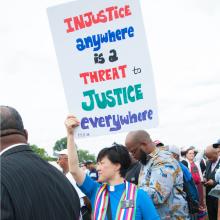
CERTAIN FORMS OF Christianity have long shared space with the political and nationalist Right in the United States. The history of white racist religion in the U.S. has also followed the line of a nativist ideology informed by a certain understanding of U.S. Protestant Christianity.
In the 1920s, the Ku Klux Klan sought to preserve Anglo-Protestant supremacy in the U.S.—especially in the face of immigrants from outside Western Europe. Later arose a particular form of racist ideology known as the “Christian Identity” movement, influential in racist organizations into the 1990s.
More recently, racialized Christian mythologies are no longer the dominant ideologies motivating white supremacists. Why has Christianity become problematic for white nationalists?
My own research reveals that Christianity is a problem for many American white nationalists because it is regarded by them as an ideology that weakens the allegedly natural instincts for racial preservation. The main objections to Christianity from contemporary white nationalists have been that 1) Christianity is of Jewish origins, and 2) that Christianity teaches, ultimately, values such as universal brotherhood of all people and the responsibility for everyone to care for one another. These are values that white nationalists have labeled “socialism” and ultimately alien to white racial nationalism.

One of the most familiar biblical passages to be read during Advent is from Isaiah 9:6: “For to us a child is born, to us a son is given, and the government will be on his shoulders. And he will be called Wonderful Counselor, Mighty God, Everlasting Father, Prince of Peace.”
At the time it was spoken, the whole world was falling apart, or so it seemed to the eighth-century prophet Isaiah. Looking over history at a string of failed rulers, and staring into the abyss at ongoing chaos and political disaster, Isaiah looked forward to a time when God would send an heir to the throne who would be a different kind of ruler, a divinely appointed one (the Messiah), and his name would tell his character. Isaiah promised a people whose hope was failing that a baby would be born.
But where do babies come from? They come from women, women who endure the discomforts of pregnancy and the excruciating pain of labor to bring forth life.
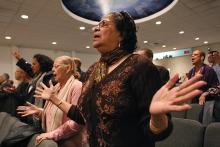
DURING ONE OF my first visits to a church in San Antonio for the Latino Protestant Congregations Project, the pastor invited a church member to speak about his experience in a federal immigration detention center. An elderly gentleman rose from his seat with a Bible tucked under his arm. For the next hour, this man, a Salvadoran undocumented immigrant, told his story.
He had been handed over to immigration officials after a minor traffic violation and was transferred to one of the largest detainment centers in south Texas. Without being overtly political, he stated matter-of-factly the conditions he endured at the overpopulated detention center, including the loud crying by men in the cells next to him throughout the night. His case for amnesty looked grim. He prepared mentally for deportation to El Salvador, a place he had left to escape violence.
Then he remembered Peter’s imprisonment in Acts 12 and decided to start a Bible study for male detainees. He was given permission to preach twice a day. He said that 150 detainees attended his gatherings and 58 converted to the gospel. On hearing this, the congregation erupted in applause and cheers of “Hallelujah!”
This church had worked tirelessly to get him released. They raised money to pay court fees, hire an attorney, and support his spouse. Endless phone calls were made to track down his records in El Salvador. Local leaders vouched for his character. The church’s efforts were eventually rewarded with his release. He—and they—understood his release as nothing short of a miracle. This Latino Protestant church provided him a platform to humanize his traumatic experience. While not intentionally political, his testimony carried political implications.
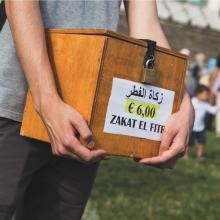
RELIGIOUSLY MOTIVATED hate crimes are on the rise in the U.S. Anti-Muslim marches are held around the country. Synagogues receive bomb threats.
And yet interreligious collaboration is also on the rise. With the Jubilee Assembly, faith-motivated investors are pooling their tithes, zakah, and offerings for a higher purpose. The coalition takes its name from the ancient concept of “jubilee”—a regular season of mandated communal economic redistribution, justice, and equity in Judaism, Christianity, and Islam.
Joshua Brockwell, a member of the Jubilee Assembly organizing team, works at Azzad Asset Management, a Muslim-led investment company. “By collaborating and putting our money where our morals are,” wrote Brockwell, “the Jubilee Assembly provides an opportunity to live out our common values and make an impact in our communities."
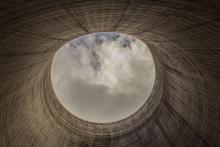
“THIS WILL BE A historic moment,” announced Ambassador Elayne Whyte Gómez on July 6, the day before 122 countries adopted the U.N. Treaty on the Prohibition of Nuclear Weapons as a legally binding agreement to outlaw nuclear weapons—and a major step toward their complete elimination. (Sixty-nine nations refused to vote, including all the nuclear weapon states and all NATO members except the Netherlands.)
“I have been waiting for this day for seven decades, and I am overjoyed that it has finally arrived,” said Setsu-ko Thurlow, a renowned antinuclear activist and survivor of the U.S. nuclear weapon dropped on Hiroshima, Japan, in 1945.
Parties to the treaty are prohibited from developing, testing, producing, manufacturing, possessing, or stock-piling nuclear weapons. The treaty also creates, for the first time, obligations to support the victims of nuclear weapons use and testing, as well as remediation of environmental damage caused by nuclear weapons.
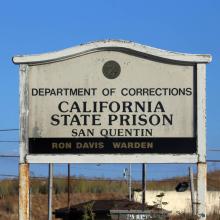
ON JUNE 29, death penalty abolitionists gathered for a four-day fast and vigil on the steps of the Supreme Court. The fast began on the anniversary of the 1972 decision that struck down the death penalty as unconstitutional and ended on the anniversary of the court’s 1976 decision to reinstate it. These activists serve as witnesses to the full arc of the political climate in which the death penalty exists in the United States.
There were signs a year ago that the death penalty in the U.S. was on its last legs. More recently, capital punishment is resurging, a shift fueled by politicians projecting fear on an anxious public. But there is hope.

WHAT DOES "SANCTUARY" mean today? The church I attend in Hyattsville, Md., a close-in suburb of Washington, D.C., took up this question after the 2016 presidential election.
Hyattsville Mennonite Church had been a “sanctuary church” in the 1980s. Given the current increase in the legitimate fear of deportation in the migrant community, we considered renewing our commitment to offering sanctuary.
In the 1980s, sanctuary was offered in the context of people fleeing the violence and devastation of the wars in Central America. In those days, offering sanctuary meant offering physical protection to individuals by housing them in churches—but it was also a broadly political statement of opposition to the U.S. government support for the wars in Nicaragua, Guatemala, and El Salvador.
Today the situation is different. The last comprehensive reform of U.S. immigration laws took place 30 years ago. Since then millions of undocumented people have established lives in the U.S. They’ve had families and raised their children here. But immigration laws have not kept pace, and paths to regularize their immigration status have been increasingly blocked. For most, there simply is no path.

OF THE MORE than 60 countries I have visited as a journalist, North Korea is by far the strangest.
As part of a five-person delegation from the Presbyterian Church (U.S.A.), I visited North Korea for one week in spring 2010 at the invitation of the Korean Christian Federation, the government-sanctioned Protestant denomination in North Korea.
From the moment we touched down in Pyongyang, we were “minded” 18 hours a day by two leaders of the KCF. We saw only what they wanted us to see and spoke only with those who were part of our official itinerary. North Koreans are forbidden to speak—or even make eye contact—with foreign visitors.
One morning before our minders showed up, I went for a short walk with another delegation member. I carried my camera and took a few photos. When we returned to the hotel, our minders were waiting for us in the lobby with several government officials. I was instructed to scroll through all my photos and was told which ones I could keep and which were to be erased on the spot.

MICHAEL J. SHARP was a close friend of mine. In the Democratic Republic of the Congo (DRC), he was a Mennonite witness, scholar, and peacemaker. Over the course of five years, first as a Mennonite Central Committee volunteer and then through the United Nations, Sharp cultivated relationships of trust amid dreadful violence. His work in the DRC included demobilizing armed groups, investigating human rights abuses, and reporting to the U.N. Security Council on “creating the conditions for peace” in the Great Lakes region of Africa.
On March 12, Sharp and colleague Zaida Catalan were killed while on a U.N. fact-finding mission in Congo’s central Kasai region. Earlier, they had documented five mass graves in the region. Over the months, the number had risen to 23. The bodies of Sharp and Catalan were found on March 27. The four Congolese members of their travel team remain missing.
Eastern Mennonite University, where Sharp attended as an undergrad, has an international program for peacemakers, with graduates such as Nobel Peace Prize winner Leymah Gebowee. Many return to their home countries to face political violence, torture, and death.
How do Christian peacemakers engage the loss of friends and colleagues? We train and study as hard for peace as soldiers do for war, yet we do not have to “soldier on” when one of us falls. We do not have to appear “strong for the cause”; there is no national myth that forces us to choke back our tears. Christian Peacemaker Teams, where I serve as executive director, immediately gave me leave to grieve and gather with loved ones. My colleagues and friends sat with our devastation. We did not pretend that the world made sense or that “God has everything under control.”

IN MARCH, Speaker of the House Paul Ryan shared his excitement about block grants. “We are de-federalizing an entitlement, block granting it back to the states, and capping its growth rate,” Ryan said. “That’s never been done before!”
Ryan’s enthusiasm should be alarming, not exciting, for Christians. The block grant model is a dangerously ineffective way to protect people when they are economically vulnerable.
What’s a block grant and what’s it good for? A block grant is a fixed amount of unrestricted funding made by the federal government to a state. Traditionally, block grants have been used for law enforcement, school systems, and public transportation, allowing states more flexibility in administering programs as well as the ability to experiment.
Generally, block grants have not been used for entitlement programs, which include Social Security, Medicaid, Medicare, the Supplemental Nutrition Assistance Program (formerly known as food stamps), and Supplemental Security Income, among other programs. Why? Because doing so cuts gaping holes into the safety net that these programs offer those who are struggling, and because “experimenting” with people when they are sick, poor, disabled, or elderly is abhorrent. Scripture is unequivocal on this: We are to honor our elders and care for the poor, widows, orphans, and strangers—the most vulnerable among us.